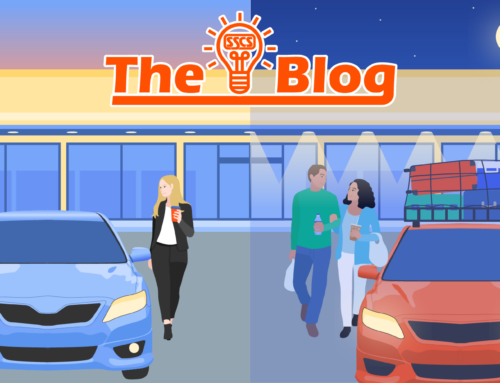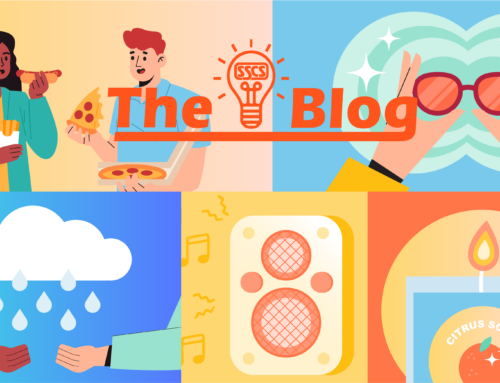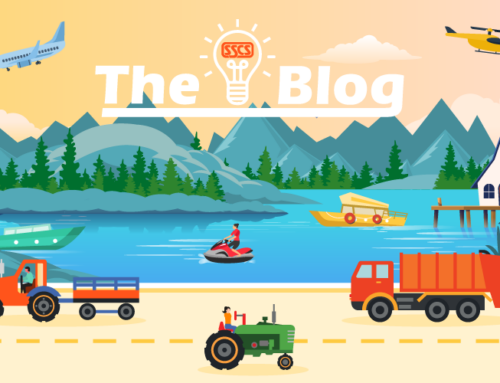Mike Wittenstein: Part 1
You can’t provide a memorable c-store experience until you live from within the perspective of the customer.
 Mike Wittenstein and his team help retail and service firm leadership teams improve customer experience. His work involves getting clients to understand customer experience not only from their own perspective, but from the perspectives of the customer and the employee, as all are enriched by an exciting, energizing retail/service environment.
Mike Wittenstein and his team help retail and service firm leadership teams improve customer experience. His work involves getting clients to understand customer experience not only from their own perspective, but from the perspectives of the customer and the employee, as all are enriched by an exciting, energizing retail/service environment.
Many factors and variables go into developing a superior customer experience strategy, and they vary from business culture to business culture. With a client roster of 400+ companies in 25 countries, Mike has an unparalleled hands-on familiarity with the widest variety of customer experience challenges.
A popular speaker with a knack for sharing the ins and outs of customer experience using easy-to-grasp concepts and relatable examples, Mike is the founder and managing partner at Storyminers in Atlanta, GA. You can read all about what he has to offer at http://mikewittenstein.com/.
The information we gleaned from Mike was plentiful enough to fill a multi-part post. Enjoy Part 1.
SSCS: Using your own terms, you and your team are specialists in customer experience design. What exactly does that entail?
Mike Wittenstein: Let’s start off with the definition of customer experience itself. Customer experience is everything your brand does FOR your customers, everything your business processes do TO your customers, and how it makes them feel. That being the case, you can look at customer experience design as the mindful creation of awesome experiences that connect with your customers on an emotional level and drive them to tell your company’s story to other people.
SSCS: Why is this work so important?
MW: With so much changing these days and competition coming from everywhere, businesses need ways to balance the need to create value for customers with the need to keep some of that value for the business. Customer experience design is based on design thinking and it’s good at creating for everyone at the same time.
SSCS: Can you provide some examples of what a convenience store can do to create a superior customer experience?
MW: Let’s start by parsing customer experience design into basic, intermediate, and advanced levels, looking at each in the context of convenience store retailing.
At the basic level, the convenience store must make sure it is paying attention to the fundamentals. Fundamentals are easy to take for granted, but in the case of the convenience store, mastering the basics is critical. A large segment of the general public continues to harbor a rather negative view of convenience stores, considering them more or less a necessary evil.
As unfounded as that assumption may be, it’s a reality. But it’s an opportunity, too, because if a convenience store does master the basics and puts together a clean, well-lit store that creates a feeling of safety, has plenty of room for parking, and is well-stocked, these attributes come across as big pluses in the eyes of the customer expecting a below-par experience.
At the intermediate level, the retailer should begin looking to see how additional value for customers can be created. One example would be giving the customer the ability to order ahead of time. A store or restaurant that makes available a smartphone app that can assist in doing this not only saves the consumer time, it optimizes kitchen operations for stores that incorporate Food Service or a Quick Serve restaurant.
At the intermediate level, the retailer should also be actively anticipating customer needs. If one does this well, the result is delivery of a better customer experience that lowers costs for the store. If you’re looking ahead and trying to gauge what consumers want, you’ll probably find you’ll be more effective at advertising, scheduling staff, and having the right inventory mix on hand. Anticipating customer needs accurately is likewise an asset when planning promotions and specials.
Another practice we endorse at the intermediate level is what we call, “Surprise and Delight.” If a peak time is coming and a lot of people are expected to be in the store, adding a staff member for four hours that can help direct store traffic or provide an enhanced level of customer attentiveness pays many dividends. Staying ahead of expectations gets people talking about the uniquely positive experience they had at the convenience store, extending the reputation of the brand.
Operators tend to recoil from the subject of adding staff, but with the right planning—you have to pick the right spots for additional personnel to be on the job—the advantages are plentiful. For example, it increases the employees’ quality of experience. They’ll feel management is being proactive in supporting them, which makes them more apt to bring extra energy and commitment to the customer. The good nature and good will of employees go a long way to ensure a positive customer experience—and it may well be the most important thing.
At the advanced level, it becomes incumbent for the convenience store retailer to find new and innovative ways to deliver value for their clients, making the site a destination for far more than getting fuel or picking up a carton of milk.
Some retailers are looking at changing their floor plans to allow for pickup and drop off of a wide variety of items. Others are exploring store-within-store concepts, such as ice cream stands or Cinnabon stations. You can take it further with laundry drop off or having pay lockers in which people can store items—or let others retrieve them with an eCode. Or setting up an inviting space that encourages people to linger—a store can become a community hub that way.
SSCS: What can a retailer do to facilitate this kind of innovative insight?
MW: The most important thing they can do is look at the world their customers live in before concentrating on their own need to squeeze more dollars out of existing square footage. If an owner-operator dons the consumer’s perspective, they more often than not get inspired in ways they hadn’t expected.
So let’s take a brief look at the world of the typical convenience store customer. They’re going from one place to another; they’re running out of time; they’re always stressed; they feel like they’re living life far more than to the max.
Knowing this, a convenience store operator can ask internally: How can we put a few precious minutes back into this person’s day? And the answers are plentiful: make sure things run seamlessly and efficiently; make sure you are stocking what the customer is expecting; allow advance ordering; experiment with drive-through service.
SSCS: I guess that the more services you can make available to the customer when he or she visits, the more time savings you can introduce into their lives.
MW: Exactly right. The traditional roles of which businesses provide certain services are blurring. There’s plenty of opportunity to be claimed. Think fast and act faster is the new mantra for convenience store leaders.
Part two of this interview, discusses the correct mindset for an owner-operator to make the transition to a new understanding of customer experience, together with a number of other related topics. Click here to read it.






Leave A Comment